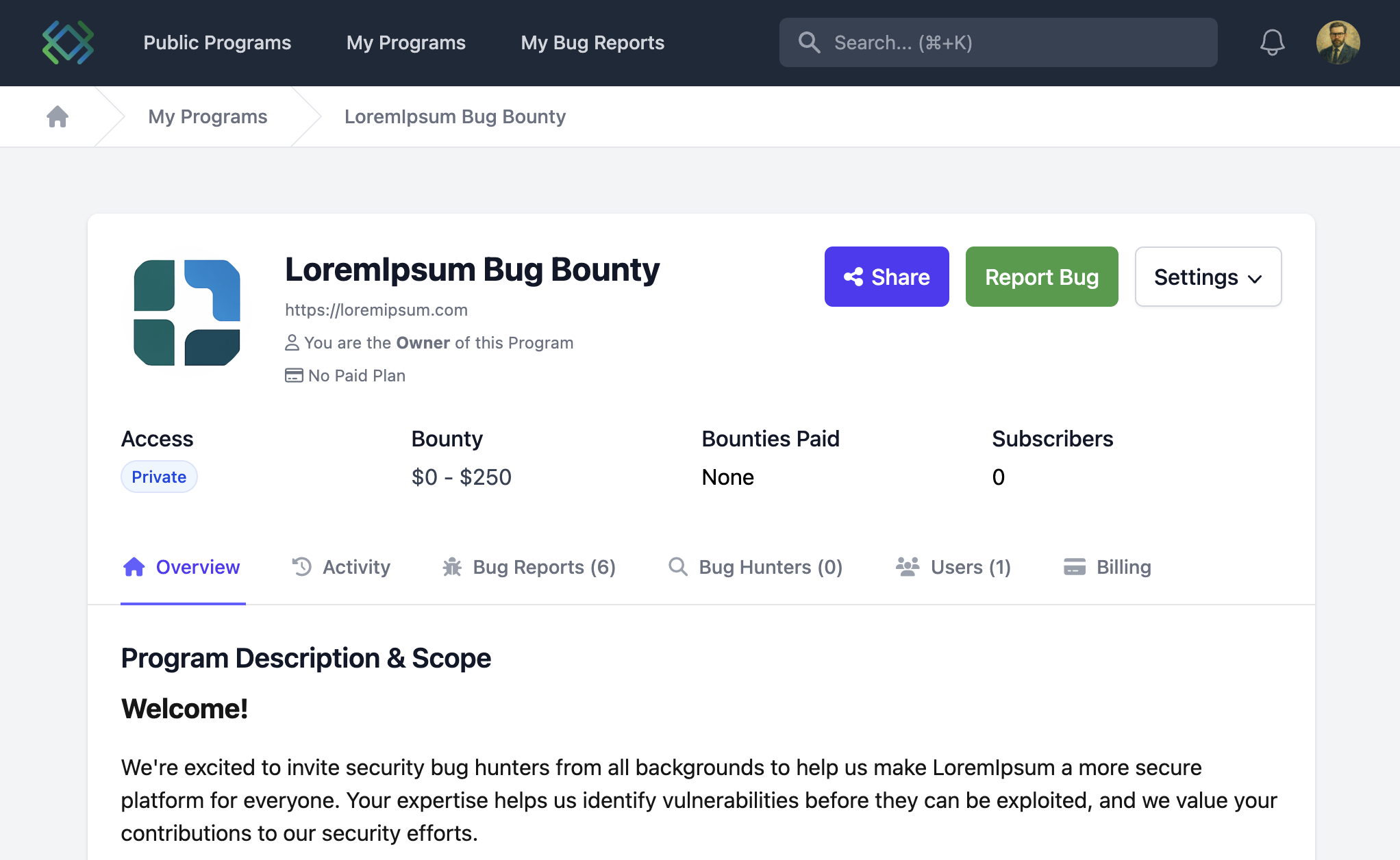Learn how to set up and manage your bug bounty program on Bugbop.
Welcome to Bugbop! As a program manager, you'll be setting up and managing your organization's bug bounty program. This guide will walk you through the essential steps to get started.
To create a new program:
Once you've created the program, you'll be presented with a Program overview page like this:

Invite team members to help manage your program via the "Settings" dropdown -> "Invite User" or the "Users" tab:
If you have worked with some bug hunters before, you can invite them by email from the "Bug Hunters" tab. The process is the same as Step 2 above but you select the "Bug Hunter" role.
Once you're satisfied with how your program is set up, it's time to launch publicly on Bugbop's "Public Programs" page.
After setting up your program:
Get personalized guidance from our security experts to set up a successful bug bounty program for your organization.